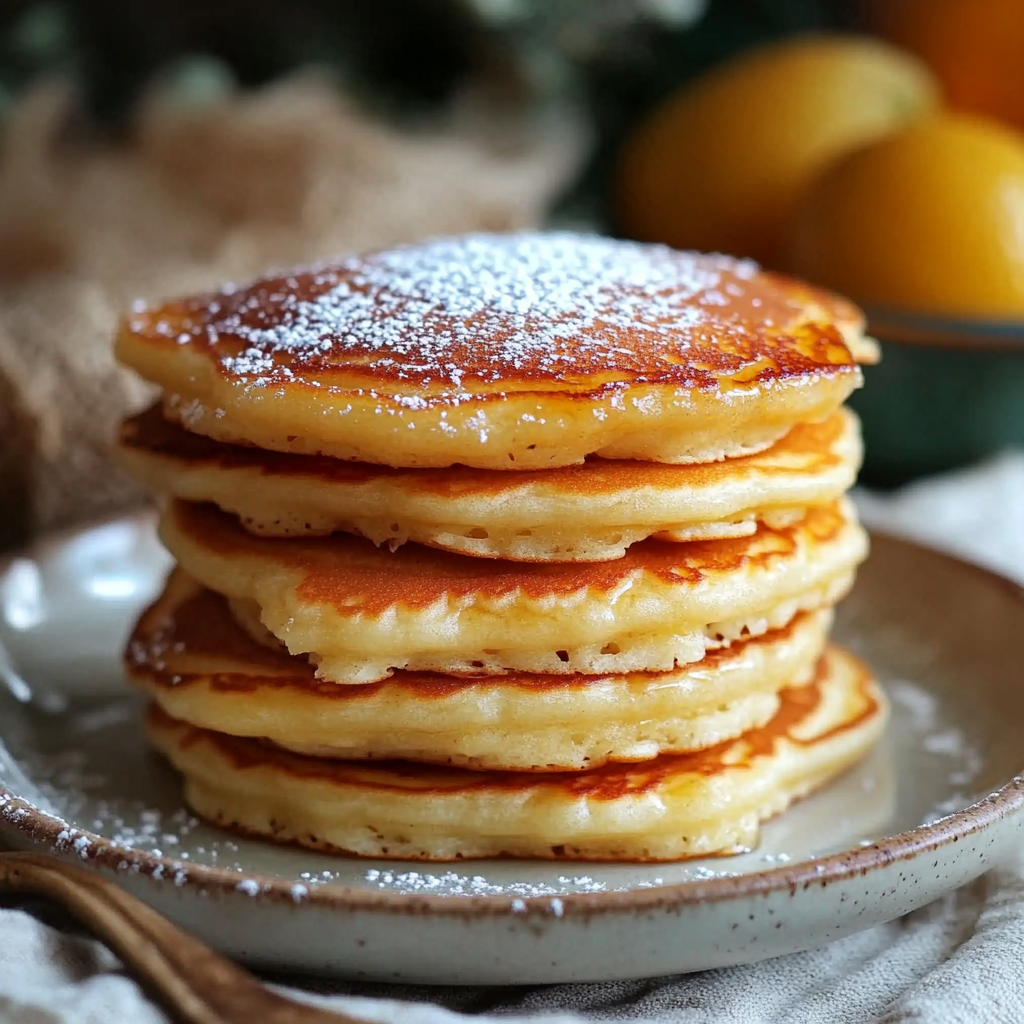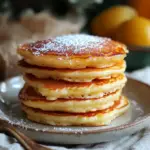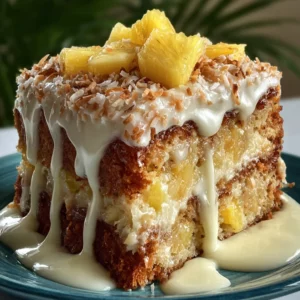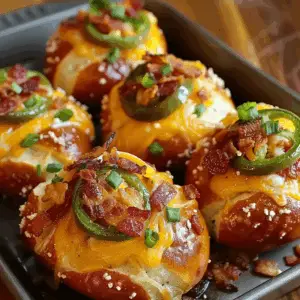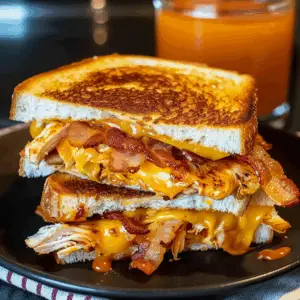Southern cornmeal hoecakes are a beloved staple of Southern United States cuisine, deeply rooted in history and tradition. These simple yet flavorful cornmeal cakes date back to early Native American and African American communities, where corn was a primary food source. Unlike traditional cornbread, hoecakes are thinner, crispier, and cooked on a skillet rather than baked.
Origins and Name
The term hoecake is believed to have originated from the practice of cooking these cakes on the flat side of a hoe over an open fire. Enslaved people and early settlers would prepare them as a quick, filling meal while working in the fields. Over time, the recipe evolved, incorporating ingredients like buttermilk, baking powder, and even bacon grease for added flavor.
What Makes Hoecakes Unique?
Compared to Johnnycakes, which are common in New England, Southern hoecakes are softer and often include flour for a lighter texture. They serve as a versatile side dish, pairing well with fried chicken, collard greens, and stews. Many Southern households enjoy them with honey, syrup, or butter, making them a delicious comfort food.
For those looking to explore more about Southern cuisine, check out the history of Southern United States Cuisine and how it has influenced modern cooking.
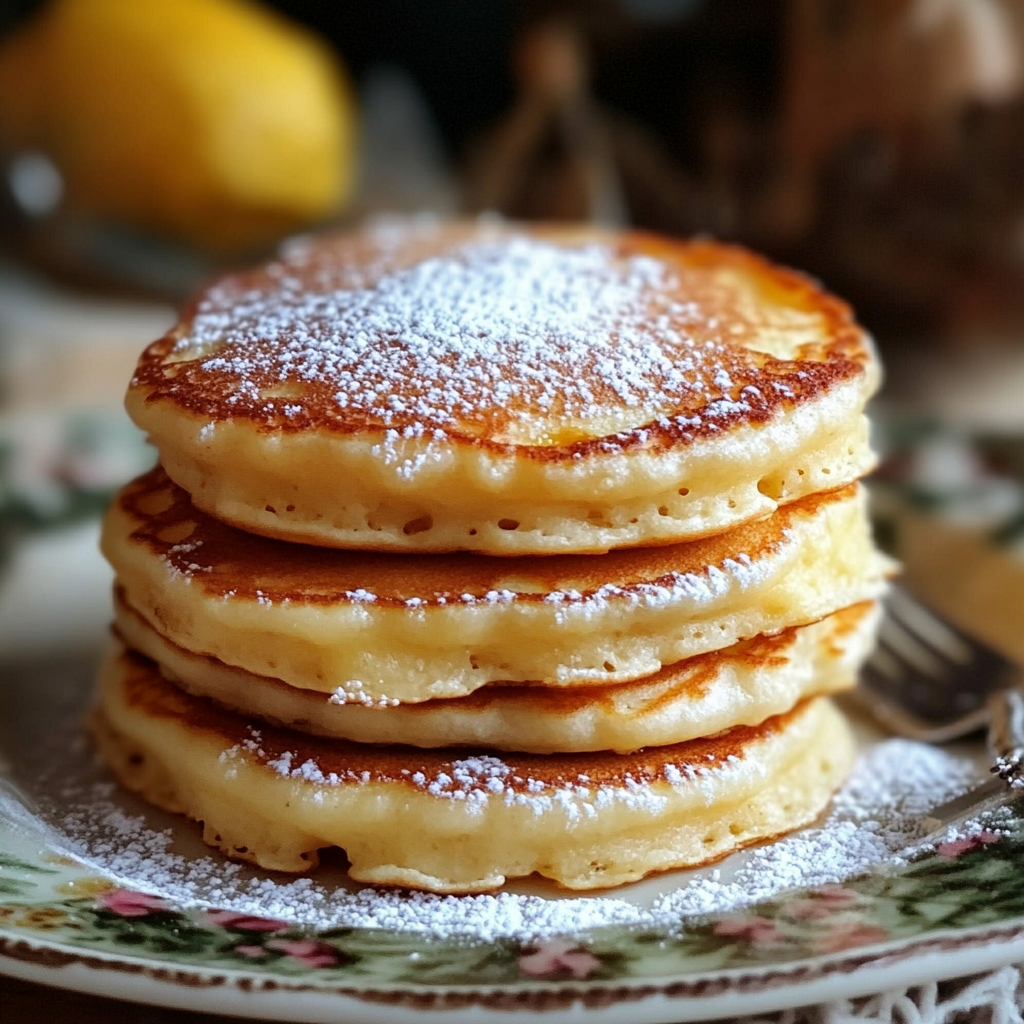
Ingredients and Their Roles
To make Southern cornmeal hoecakes, you’ll need a few basic ingredients, each playing a crucial role in achieving the perfect texture and flavor. Understanding these ingredients will help you customize the recipe to your taste while maintaining the dish’s authenticity.
1. Cornmeal: The Star Ingredient
The primary ingredient in hoecakes is cornmeal, which gives them their signature crispy edges and slightly grainy texture. Traditionally, stone-ground cornmeal is used for its rich, nutty flavor, but finely ground cornmeal creates a smoother consistency. Learn more about different cornmeal types on Wikipedia’s Cornmeal Page.
2. All-Purpose Flour: Adding Lightness
While some recipes stick to pure cornmeal, adding all-purpose flour creates a softer, fluffier hoecake. This balances the grit of the cornmeal, making it easier to work with. For a gluten-free option, you can substitute almond or rice flour.
3. Baking Powder: Essential Leavening
Baking powder helps the hoecakes rise slightly, preventing them from being too dense. Without it, they might turn out flat and heavy. If you prefer a more rustic texture, you can reduce the amount or omit it entirely. For a deep dive into how leavening works, check Wikipedia’s Baking Powder Page.
4. Salt: Enhancing Flavor
Even in simple recipes, salt is vital for bringing out the natural flavors of cornmeal and butter. Some cooks prefer sea salt or kosher salt for a richer taste.
5. Buttermilk: Adding Tang and Moisture
Buttermilk gives hoecakes a slight tang and tender texture, making them richer and fluffier. If you don’t have buttermilk, you can make a substitute by adding one tablespoon of vinegar or lemon juice to a cup of milk. Read more about buttermilk’s benefits in cooking on Wikipedia’s Buttermilk Page.
6. Egg: Binding and Structure
The egg in hoecakes acts as a binding agent, holding the batter together and giving it a slightly fluffy texture. Without eggs, hoecakes can become crumbly and difficult to flip. If you’re looking for an egg-free option, you can substitute a flaxseed or chia seed mixture.
7. Melted Butter or Bacon Grease: Richness and Flavor
Adding melted butter or bacon grease enhances the overall flavor and texture of hoecakes. Bacon grease is a traditional choice in many Southern kitchens, adding a smoky depth that pairs well with savory dishes. If you prefer a lighter version, vegetable oil or ghee can work as alternatives.
8. Water: Adjusting Consistency
Depending on the type of cornmeal used, the batter may need a little water to reach the right consistency. A good batter should be pourable but not too runny. If the batter is too thick, adding small amounts of water helps create thinner, crispier hoecakes.
9. Vegetable Oil for Frying: The Perfect Crisp
Choosing the right oil for frying is essential for achieving golden brown, crispy edges. Traditional choices include vegetable oil, canola oil, or peanut oil, as they have a high smoke point. If you want extra flavor, coconut oil can add a subtle sweetness. Learn more about the science behind frying on Wikipedia’s Frying Page.
Hoecakes can be easily customized by adjusting these ingredients. Whether you like them fluffy, crispy, sweet, or savory, small changes to the batter can completely transform their taste and texture.
Step-by-Step Cooking Instructions
1. Preparing the Batter
Start by whisking together the cornmeal, flour, baking powder, and salt in a large mixing bowl. This ensures the dry ingredients are evenly distributed, preventing clumps.
In a separate bowl, whisk the buttermilk, egg, and melted butter or bacon grease. Slowly pour the wet mixture into the dry ingredients, stirring until just combined. Be careful not to overmix, as this can make the hoecakes dense rather than light and crispy.
If the batter appears too thick, add a little water until it reaches a smooth, pourable consistency similar to pancake batter.
2. Heating the Skillet
A cast-iron skillet is ideal for frying hoecakes because it distributes heat evenly, ensuring consistent browning. If you don’t have a cast-iron skillet, a nonstick pan or griddle will work as well.
Heat the skillet over medium heat and add enough vegetable oil to lightly coat the bottom. You want the oil hot but not smoking—around 350°F (175°C) is ideal.
For more tips on using cast iron, check out Pinterest’s Cooking with Cast Iron Board.
3. Frying the Hoecakes
Using a spoon or ladle, pour about two tablespoons of batter into the skillet, spreading it slightly to form a small pancake. Cook for 2–3 minutes or until the edges begin to set and small bubbles form on the surface.
Carefully flip the hoecake and cook for another 1–2 minutes until golden brown. If needed, adjust the heat to prevent burning. Repeat until all the batter is used, adding more oil to the pan as necessary.
4. Draining and Serving
Once cooked, transfer the hoecakes to a paper towel-lined plate to drain excess oil. Serve them warm, topped with butter, honey, syrup, or sorghum molasses.
For more hoecake serving ideas, explore Pinterest’s Southern Breakfast Ideas.
Variations and Regional Twists
One of the best things about Southern cornmeal hoecakes is their versatility. While the traditional recipe remains a classic, many regions and home cooks have put their own spin on it. From sweet to savory variations, hoecakes can be customized to suit any taste.
1. Traditional vs. Modern Adaptations
Historically, hoecakes were made with just cornmeal, water, and salt, cooked over an open flame. Over time, additions like buttermilk, eggs, and baking powder became common, resulting in the fluffier, more refined version we know today.
Modern versions often incorporate cheese, herbs, or sweeteners to enhance the flavor. Some cooks even turn them into mini sandwiches by stacking them with meats or spreads.
2. Savory Hoecake Variations
If you prefer savory hoecakes, try adding:
- Cheddar cheese – Melts into the batter for a rich, creamy bite.
- Jalapeños or green onions – Adds a spicy kick and depth of flavor.
- Bacon bits – A crispy, smoky addition that pairs well with hoecakes.
- Corn kernels – Enhances texture and gives a slight sweetness.
3. Sweet Hoecake Variations
For a sweeter take, you can mix in:
- Sugar or honey – Balances the natural corn flavor with mild sweetness.
- Vanilla or cinnamon – Adds warmth and depth.
- Mashed bananas or sweet potatoes – Makes the hoecakes softer and naturally sweet.
Many Southern households enjoy serving hoecakes with sorghum molasses or maple syrup, making them a great alternative to traditional pancakes. Learn more about Southern comfort food on Pinterest’s Southern Comfort Food Board.
4. Regional Differences
- New England Johnnycakes – Similar to hoecakes but made with only cornmeal and water, often cooked on a griddle.
- Appalachian Corncakes – Includes sorghum syrup or apple butter for added sweetness.
- Cajun Hoecakes – Spiced up with Cajun seasoning and sometimes served with shrimp or crawfish étouffée.
If you’re interested in experimenting with cornmeal-based dishes beyond hoecakes, check out different Cornmeal Recipes on Pinterest.
Whether you like them simple and traditional or packed with bold flavors, hoecakes can be adapted in countless ways.
Best Ways to Serve Hoecakes
One of the best things about Southern cornmeal hoecakes is their versatility. Whether served as a side dish, a main course, or even a dessert, hoecakes can be paired with a variety of toppings and accompaniments to enhance their flavor.
1. Classic Toppings
Traditionally, hoecakes are served warm with butter, but there are plenty of delicious ways to top them:
- Honey or maple syrup – Adds natural sweetness and pairs well with the crispy texture.
- Sorghum molasses – A traditional Southern topping with a rich, slightly tangy taste.
- Whipped butter – Melts into the hoecake for a simple, comforting bite.
- Fruit preserves or jam – Adds a fruity contrast to the cornmeal flavor.
For inspiration on classic hoecake presentations, check out Pinterest’s Southern Breakfast Ideas.
2. Pairing Hoecakes with Southern Dishes
Hoecakes make an excellent side dish for many traditional Southern meals. Some popular pairings include:
- Fried chicken – The crispy hoecake complements the crunch of fried chicken.
- Collard greens – Use hoecakes to soak up the flavorful juices.
- Barbecue pulled pork – A savory combination that’s great for sandwiches.
- Gumbo or stews – Hoecakes act as a perfect substitute for cornbread.
For a deeper dive into Southern comfort food pairings, check out Wikipedia’s Southern United States Cuisine.
3. Using Hoecakes as a Base
Hoecakes can also serve as the foundation for more creative dishes. Some ideas include:
- Breakfast hoecake stacks – Layer with eggs, bacon, and cheese.
- Mini hoecake sliders – Use them as buns for pulled pork or fried fish sandwiches.
- Taco-style hoecakes – Top with shredded chicken, avocado, and salsa for a Southern-Mexican fusion.
For more unique hoecake serving ideas, explore Pinterest’s Southern Comfort Food Board.
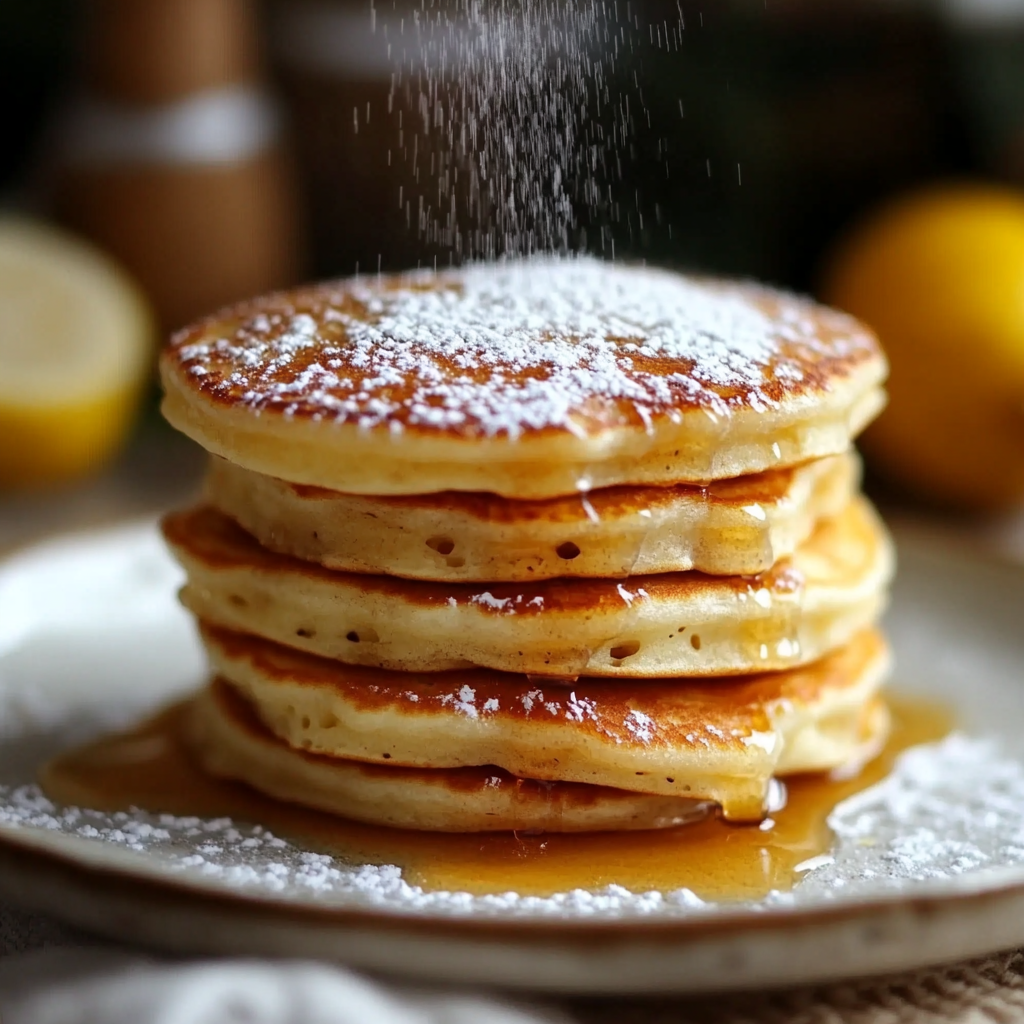
Expert Tips for Perfect Hoecakes
Making Southern cornmeal hoecakes is simple, but a few expert tips can help you achieve the perfect texture and flavor every time. From choosing the right ingredients to cooking them just right, these tips will elevate your hoecakes to the next level.
1. Choosing the Best Cornmeal
The type of cornmeal you use affects the texture and taste of your hoecakes. Here’s what to consider:
- Stone-ground cornmeal – Provides a rustic texture and rich, natural corn flavor.
- Fine-ground cornmeal – Creates a smoother, more uniform hoecake.
- Self-rising cornmeal mix – Convenient, as it already contains baking powder and salt.
For a detailed look at different cornmeal types, visit Wikipedia’s Cornmeal Page.
2. Achieving the Right Batter Consistency
The ideal hoecake batter should be pourable but not too thin. If the batter is:
- Too thick – Add a little water or extra buttermilk to loosen it up.
- Too thin – Sprinkle in a little more cornmeal until the consistency is right.
Mix gently to avoid overworking the batter, which can make the hoecakes dense instead of tender.
3. Cooking at the Perfect Temperature
- Heat the skillet over medium heat—too hot, and the hoecakes will burn; too low, and they’ll be greasy and undercooked.
- Use vegetable oil, bacon grease, or butter for frying to create crispy edges.
- To test if the pan is ready, drop a small amount of batter in the skillet—if it sizzles immediately, it’s ready.
For more frying tips, check out Wikipedia’s Frying Page.
4. Flipping and Cooking Evenly
- Wait until small bubbles form on the surface and the edges look set before flipping.
- Use a thin spatula to flip gently—hoecakes can be delicate.
- Cook on the second side for 1-2 minutes until golden brown.
5. Storing and Reheating Hoecakes
- Refrigerate leftovers in an airtight container for up to 3 days.
- To reheat, warm them in a dry skillet over low heat or in a 350°F oven for 5 minutes.
- Avoid microwaving, as it can make them rubbery.
For more creative ways to use leftover hoecakes, check out Pinterest’s Cornmeal Recipes.
By following these expert tips, you’ll get crispy, golden hoecakes with a tender interior every time.
Common Mistakes and Troubleshooting
Even though Southern cornmeal hoecakes are simple to make, a few common mistakes can affect their texture, taste, or appearance. Below are the most frequent issues and how to fix them.
1. Batter is Too Thick or Too Thin
- Problem: Thick batter creates dense, heavy hoecakes, while thin batter spreads too much and becomes fragile.
- Solution: Adjust consistency by adding a little water or buttermilk if it’s too thick or a bit more cornmeal if it’s too thin. The batter should be pourable but not runny.
2. Hoecakes Are Falling Apart
- Problem: The hoecakes break apart when flipping.
- Solution: This can happen if the batter is too thin or lacks enough binding ingredients (like egg or flour). Make sure to use one large egg and avoid flipping too early—wait until bubbles form on the surface.
3. Uneven Browning or Burning
- Problem: Some hoecakes cook too fast while others remain pale.
- Solution: Maintain a consistent medium heat. If the pan is too hot, hoecakes will burn before cooking through. If it’s too cool, they will absorb oil and become greasy. A cast-iron skillet distributes heat evenly and is highly recommended. Learn more about cast iron cooking on Pinterest’s Cooking with Cast Iron Board.
4. Hoecakes Are Too Greasy
- Problem: The hoecakes soak up too much oil, making them greasy.
- Solution: Ensure the oil is hot enough before adding the batter. Test it by dropping in a small amount of batter—if it sizzles immediately, it’s ready. Also, drain cooked hoecakes on paper towels to remove excess oil.
5. Hoecakes Taste Bland
- Problem: The flavor is too plain or lacking depth.
- Solution: Add a pinch more salt or consider incorporating cheese, herbs, or honey for extra flavor. Using bacon grease instead of butter can also enhance the taste.
By avoiding these mistakes, you’ll get perfectly crisp, flavorful hoecakes every time.
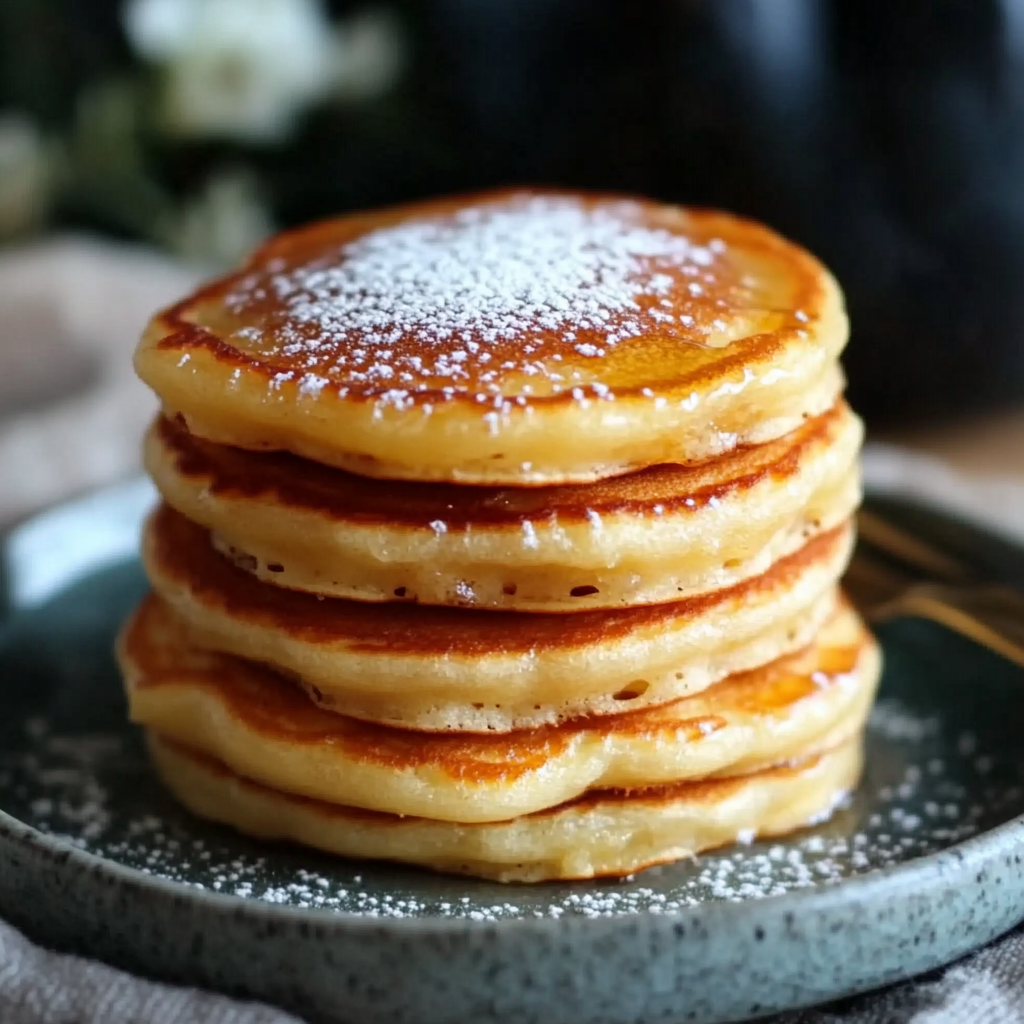
Frequently Asked Questions (FAQs)
Here are some common questions about Southern cornmeal hoecakes, along with expert answers to help you master this classic dish.
1. Are hoecakes the same as Johnnycakes?
Not exactly. While both are made with cornmeal, Johnnycakes—popular in New England cuisine—typically use only cornmeal and water, making them denser and chewier. Southern hoecakes, on the other hand, often contain buttermilk, flour, and eggs, giving them a lighter, pancake-like texture. Learn more about regional cornmeal-based dishes on Wikipedia’s Cornmeal Page.
2. Can I make hoecakes without buttermilk?
Yes! If you don’t have buttermilk, you can make a substitute by adding one tablespoon of lemon juice or vinegar to a cup of regular milk and letting it sit for 5 minutes. Alternatively, you can use plain yogurt mixed with water for a similar tangy flavor.
3. What’s the best way to store and reheat hoecakes?
- Storage: Keep leftover hoecakes in an airtight container in the fridge for up to 3 days.
- Reheating: Warm them in a dry skillet over low heat or in a 350°F oven for about 5 minutes. Avoid microwaving, as it can make them rubbery.
For creative ways to use leftover hoecakes, check out Pinterest’s Cornmeal Recipes.
4. Can I bake hoecakes instead of frying them?
Yes, but the texture will be different. Instead of crispy edges, baked hoecakes will be softer, like cornbread pancakes. To bake, pour the batter into a greased muffin tin or a sheet pan and bake at 375°F (190°C) for 10-15 minutes until golden brown.
5. Are hoecakes supposed to be crispy or soft?
Both! Traditional Southern hoecakes are crispy on the outside and soft on the inside. To get crispier hoecakes, cook them in hot oil or bacon grease in a cast-iron skillet. If you prefer a softer texture, use less oil and lower the cooking temperature slightly.
PrintSouthern Cornmeal Hoecakes
Southern Cornmeal Hoecakes are a classic staple of Southern cuisine, known for their crispy edges and soft, buttery centers. Made with simple ingredients like cornmeal, buttermilk, and bacon grease, these skillet-fried cakes are a delicious alternative to cornbread. Whether served sweet with honey or syrup or savory alongside collard greens and fried chicken, hoecakes are a versatile comfort food perfect for any meal.
- Author: Clara
Ingredients
- 1 cup cornmeal
- ½ cup all-purpose flour
- 1 tsp baking powder
- ½ tsp salt
- 1 cup buttermilk
- 1 large egg
- 2 tbsp melted butter or bacon grease
- ¼ cup water (if needed)
- Vegetable oil for frying
Instructions
In a large bowl, whisk together the cornmeal, flour, baking powder, and salt.
Add the buttermilk, egg, and melted butter or bacon grease. Stir until combined. If the batter is too thick, add a little water until it reaches a pourable consistency.
Heat a large skillet or griddle over medium heat and add enough vegetable oil to coat the bottom.
Spoon about 2 tablespoons of batter per hoecake into the skillet, spreading it slightly. Cook for 2-3 minutes until the edges look set and bubbles form on top.
Flip and cook for another 1-2 minutes until golden brown. Remove from the skillet and drain on paper towels.
Serve warm with butter, honey, or syrup.
Notes
- Cornmeal Choice: For a more traditional, rustic texture, use stone-ground cornmeal. For a smoother consistency, use fine-ground cornmeal.
- Crispier Hoecakes: Cook in hot bacon grease or vegetable oil in a cast-iron skillet for the best crispy edges.
- Batter Consistency: The batter should be pourable but not too thin—adjust with a little water if needed.
- Serving Suggestions: Enjoy hoecakes warm with butter, honey, molasses, or maple syrup. They also pair well with savory dishes like barbecue, stews, and fried fish.
- Storage & Reheating: Store leftovers in an airtight container in the fridge for up to 3 days. Reheat in a skillet over low heat or in a 350°F oven for 5 minutes.
